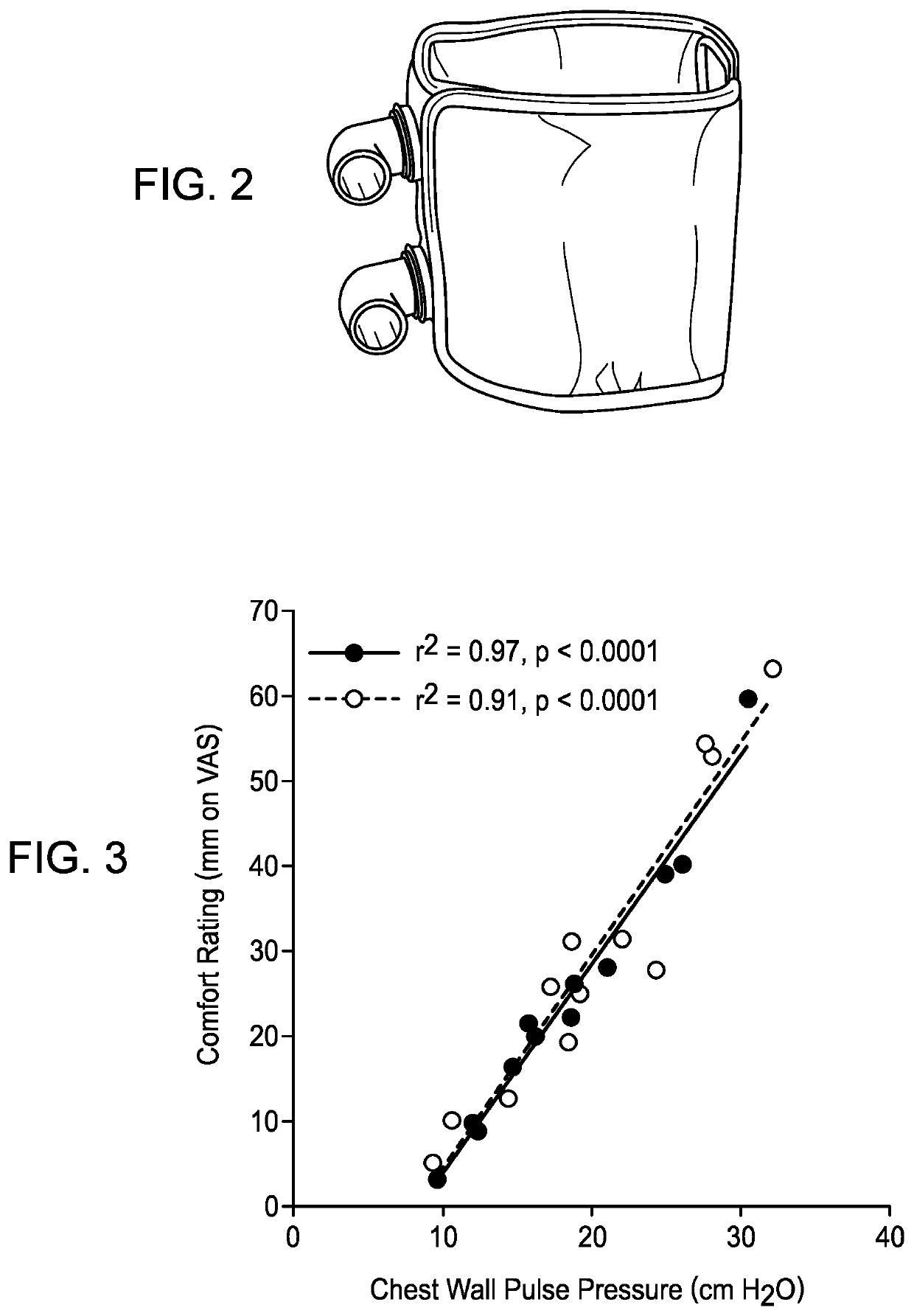Vibratory Expulsive Therapy For Urinary Stones
a technology of urinary stones and expulsive therapy, which is applied in the field of vibratory expulsive therapy for urinary stones, can solve the problems of increased pain and forniceal rupture risk, increased ureter, renal pelvis and/or capsule distension, etc., and achieves low cost, minimally invasive, and facilitates the passage of ureteral stones
- Summary
- Abstract
- Description
- Claims
- Application Information
AI Technical Summary
Benefits of technology
Problems solved by technology
Method used
Image
Examples
example 1
High Frequency Chest Wall Compression (HFCWC) Vest for Administering VET
[0108]Vibratory effects and ureteral relaxation aid the passage of stones. The physiological mechanisms of vibration producing ureteral relaxation is based on animal models. Prior work in canine models show that active tension in the ureter is decreased by vibration. During stone extraction in animal models tension in the ureter was considerably lower when vibration was applied to the system. Prior usage of vibrational therapy on patients with ureteral stones has proven an effective aid in stone passage. Notably, in one report, patients reported a decrease in renal colic type pain with EPVL. No other work reported on pain control.
[0109]It is known that cutaneous vibration is able to reduce both clinical and experimental pain. Similarly, VET disclosed herein benefits patients with renal colic. The disclosure provides that the force delivered to the body by HFCWC would be able to deliver significant vibrational fo...
example 2
Urodynamic Tracing of Patient with External Vibrational Vest
[0111]Using a HFCWC device positioned around the abdomen in a patient undergoing urodynamics for another indication, increasing frequency was found to correlate with increasing abdominal and bladder pressure. (FIGS. 4 and 5). The therapy was started at 5 Hz and increased up to 20 Hz over the period of the study. Pressure setting was set at maximum at 10 units (manufacturer's setting, no SI unit). The abdominal pressure was measured by a catheter placed in the rectum and the bladder pressure was measured by a catheter in the bladder.
[0112]These findings are interpreted as a proof of concept that the external vibratory therapy can be used to create sufficient force on the retroperitoneum and lower abdomen. Of note, the patient did not report any pain from the vibratory therapy and was comfortable throughout. Further, a more efficient transfer of vibratory therapy to the abdomen is expected because there is no chest wall / thora...
example 3
Optimization of VET for Patients who Present to the ED with Renal Colic Secondary to Ureteral Stones
[0114]VET provides an easy to utilize and well tolerated therapy with high patient satisfaction and a low side effect profile for patients with renal colic secondary to ureteral stones. VET is also easy to administer to patients in the ED. Further, certain parameters can be optimized for individualized VET application and delivery for patients in the ED.
[0115]Patients older than 18 years of age and having obstructive nephrolithiasis and ureteral stones≤10 mm would be enrolled into an optimization study. The size of the ureteral stones can be confirmed using CT imaging. These patients are candidates for traditional treatments with medical expulsion therapy.
[0116]Patients with certain criteria would be excluded from the study, such as patients having: hemodynamic instability, urinary tract infection, fever defined as >38.0° C., known genitourinary abnormalities including prior surgical ...
PUM
 Login to View More
Login to View More Abstract
Description
Claims
Application Information
 Login to View More
Login to View More - R&D
- Intellectual Property
- Life Sciences
- Materials
- Tech Scout
- Unparalleled Data Quality
- Higher Quality Content
- 60% Fewer Hallucinations
Browse by: Latest US Patents, China's latest patents, Technical Efficacy Thesaurus, Application Domain, Technology Topic, Popular Technical Reports.
© 2025 PatSnap. All rights reserved.Legal|Privacy policy|Modern Slavery Act Transparency Statement|Sitemap|About US| Contact US: help@patsnap.com



